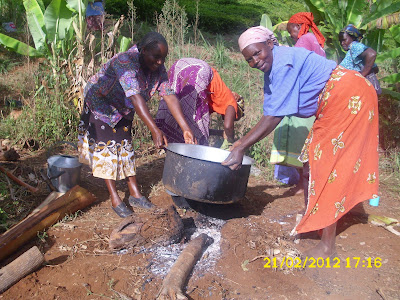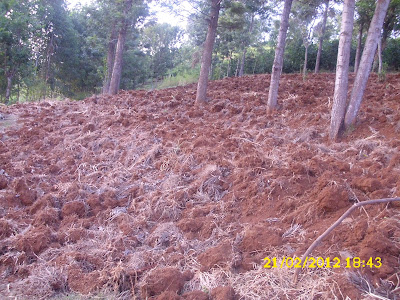The members of the Gaketha group have established a tree nursery. They have been instructed and assisted by Mr. Njue who is an expert in this field. They are going to grow indigenous trees as well as Neem and Moringa. The trees will provide fruits,medicinal herbs, natural herbicides and fungicides as well as firewood and building materials. Planting trees will be an important contribution to preventing further deforestation and counteracting the devastating effects of climatic change. The project also provides an additional source of income for the group members.
The seeds are germinated in seedbeds. The young seedlings have to be protected against the sun with shades.
When the seedlings are strong enough they are transplanted into plastic bags filled with soil.
Filling the bags is a time-consuming and tiresome job.
On the group´s working day, the members spend the whole day in the tree nursery. Children come along with their mothers. They are welcome helpers and get some environmental training.
 |
| strong healthy Neem seedlings |
|
|
 |
| women preparing food for the group members |
 |
| an urgent issue: digging a pit latrine for the workers |
 |
| The hole has to be dug quite deep. |
 |
| a good example of an easy-to-clean toilet floor (seen at Kari Agricultural Research Institute) |
 |
| the Gaketha group |
























